
A well-deserved vacation for the youngest-ever President of the United States: that's how many perceived Teddy Roosevelt's 1905 wolf hunt in the cattle-grazing lease of the KCA (Kiowa, Comanche, and Apache) Reservation of Oklahoma Territory known as the Big Pasture.
But it was much more than that. The Big Pasture was a perfect place for big-picture diplomacy: a setting for the President to gather influential Texas cattle ranchers and business leaders, regional law enforcement officials, Territorial political leaders, and even a well-known Indian chief. What better location to air private conversations about a national political question that had simmered in the US Congress since 1893, that of statehood for the Indian and Oklahoma Territories?
Roosevelt began the 17-day trip with a reunion with his beloved Rough Riders of San Juan Hill fame in San Antonio, Texas; then went on to the wolf hunt in Oklahoma Territory; dinner with Quanah Parker at Star House; and then a bear hunt in Colorado.
Meet Bob Saul
Bob Saul was raised on a cattle ranch that was originally part of the Lazy F Ranch, founded in 1876 and purchased by Charles Goodnight in 1882 as part of the historic JA/Goodnight ranches in the canyons of the Texas Panhandle at Quitaque, Texas. Bob has served as editor, vice-president, and president of publishing companies in Texas and Tennessee. For 26 years, he maintained a dual career as a consultant in volunteer program management for four national non-profits while he owned and operated a custom software business in New York City. He is currently president of History Partners, Inc. and oooMsgs Inc. as well as president of two nonprofits, MyComancheria Institute and Star House Preservation, Inc. He also serves voluntarily as president of West Texas Trails Association and the event producer of the Lone Star Cowboy Poetry Gathering held every 3rd Thurs-Sat in February in Alpine, Texas.

In the spring of 1921, West Texas State Normal College historian Hattie M. Anderson founded the first professional historical association in the Texas Panhandle, the Panhandle-Plains Historical Society (PPHS). Inspired by what was then considered to be cutting-edge historical theory, Anderson and her colleagues set out to collect historical artifacts as well as to record interviews with the last of the Panhandle's generation of nineteenth-century pioneer ranchers, in order to ensure that local lessons of democracy, self-reliance, and rugged individualism be remembered by future generations. PPHS efforts at historical preservation were so successful that they culminated with the opening of the Panhandle-Plains Historical Museum in 1933, one of the first (and now, the biggest) history museums in the state. This presentation traces the early work of the PPHS from 1921 through U.S. entry into World War Two, in order to examine the role of western history and the preservation of historic artifacts in the shaping of regional identity in the Texas Panhandle.
Meet Tim Bowman
Tim Bowman is professor of history and head of the Department of History at West Texas A&M University in Canyon, Texas. He is the author of Blood Oranges: Colonialism and Agriculture in the South Texas Borderlands (Texas A&M University Press, 2016), and You Will Never Be One of Us: A Teacher, a Texas Town, and the Rural Roots of Radical Conservatism (University of Oklahoma Press, 2022), and numerous articles and book chapters. He is co-author, with Marty Kuhlman, of a forthcoming book, tentatively titled The People's Museum: A History of the PPHM, from which this presentation is based.
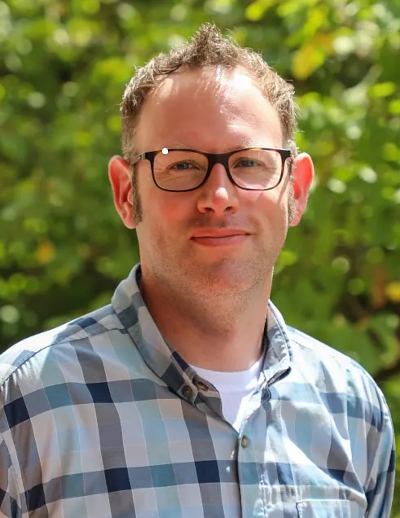
The history of the long military contest for control of the Great Plains has been dominated by stories about famous men like Crazy Horse, Sitting Bull, and George Armstrong Custer. Indian women rarely figure into old narratives or modern historiography. They are often ignored entirely or portrayed as victims of the violence which engulfed the region during the eighteenth and nineteenth centuries. The standard argument is that equestrianism and raiding triggered political and socioeconomic cycles which reduced women to the status of a servile underclass valued primarily for their ability to process bison robes for trade to Euro-American entrepreneurs. Histories of the "Indian Wars" have hardly done a better job of analyzing Native women. Although these clashes were hardly an unmitigated positive for Plains Indian women, they were able to parlay conflict into the promotion of personal status and enhanced cultural prestige. As warriors, workers, and diplomats, Indian women were central to the violent struggles for the Great Plains. Any history that ignores their contributions is an incomplete narrative.
Meet David Beyreis
David Beyreis is a historian of the Great Plains and Southwest borderlands. He is the author of Blood in the Borderlands: Conflict, Kinship, and the Bent Family, 1821-1920, which received the Gaspar Perez de Villagra Award from the Historical Society of New Mexico and the Louise Barry Writing Award from the Santa Fe Trail Association. His journal articles have received the Coke Wood Award for Best Historical Monograph or Article from the Westerners International and a Western Heritage Wrangler Award from the National Cowboy & Western Heritage Center. His book project is tentatively titled Soldier Girls: Native Women and the Wars for the Great Plains, and is under contract with the University of Nebraska Press. He teaches history and government at Saint Mary's School in Raleigh, North Carolina. He is a member of Fort Worth Westerners.
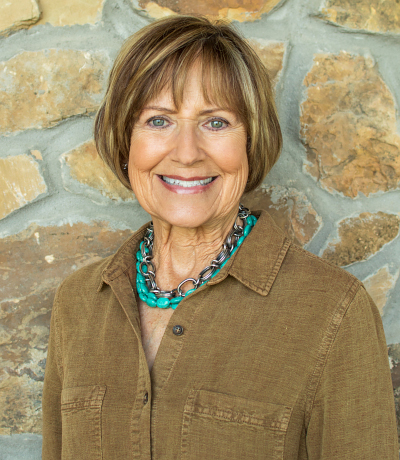
In the summer of 1925, Enid Justin—daughter of H. J. Justin, founder of legendary Justin Boots—announced to her family that she was going to start her own boot company in her hometown of Nocona, Texas. The announcement shocked her family, who prophesied failure and begged her to reconsider, but thirty-one-year-old Enid's mind was made up. What followed would be a multi-decade saga of tenacity, endurance, dedication, and entrepreneurial success.
Meet Carol A. Lipscomb
Carol A. Lipscomb earned her PhD in history while she, her husband, and their three sons lived in the small town of Nocona, Texas. Lipscomb studied the Nocona area and explored its Spanish Texas connection in collaboration with Robert S. Weddle on After the Massacre: The Violent Legacy of the San Saba Mission. Living in Nocona also led Lipscomb to the improbable story of Enid Justin and her Nocona Boot Company, a story she researched exhaustively. The resulting book, The Lady Makes Boots, received the Lou Halsell Rodenburger Prize in History, Culture, and Literature from Texas Tech University, the Temple-Vick Award from the East Texas Historical Association, and a Will Rogers Medallion Award. Lipscomb is an independent historian who researches and writes from her home in Fort Worth.
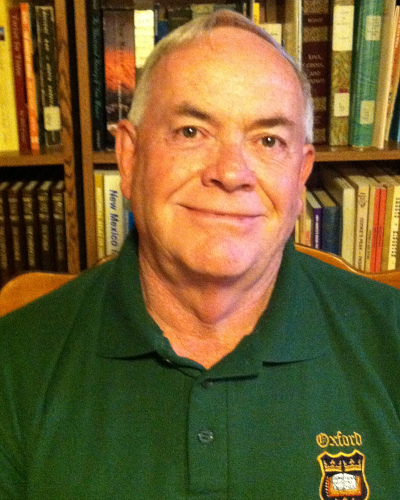
The movie Ulzana's Raid, starring Burt Lancaster, was released in 1972. While the movie examines Apache culture and warfare in a much different light than many older films, the events on which it is loosely based are worthy of much closer examination. Ulzana, also known as Josannie, was responsible for multiple casualties among civilians and soldiers during late 1885 and early 1886. Included was a skillful ambush that took place in the mountains of southwestern New Mexico at a location known thereafter as "Soldier Hill." Dr. Dinwiddie will trace the events leading up to that event, and share his research with the members of the Westerners Corral.
Meet Dr. Doug Dinwiddie
Doug is a retired professor of history, having taught for more than three decades at several universities, including New Mexico State, and Colorado State, receiving awards for outstanding teaching at both institutions. His specialty is military history and the American West, but he is drawn to all facets of history. He continues to teach classes in a variety of historical topics at the Western Institute for Lifelong Learning, based in Silver City, New Mexico. In his spare time, he serves as the President of the Fort Bayard Historic Preservation Society, and regularly leads guided tours at Fort Bayard National Historic Landmark. His career also included thirteen years of museum curatorial work. He holds a PhD in history and political science from Northern Arizona University, and did additional graduate study at Oxford University, United Kingdom; Georgetown University in the District of Columbia; the University of North Texas; and the University of Texas at San Antonio.

Dallas-Fort Worth is commonly known as "the Metroplex." Residents and visitors to the United States' fourth-largest metropolitan area are familiar with the name, and to call another city a "Metroplex" might be confusing, if not quite inappropriate. A popular origin story says that in 1972, Harve Chapman of Dallas-based Tracy-Locke Advertising fused metropolitan and complex into the distinctive portmanteau. But the real story is more complicated and intriguing. The term migrated from region to region before reaching Texas, shifting in the process from a word meant to interrogate the problems of older, industrial cities to a word with distinctly utopian connotations. It is no surprise that by the early 1970s, North Texans appropriated metroplex to market their area as a unique and diffuse metropolitan region with scarce problems—a place where corporations and people could escape urban chaos by embracing a good life characterized by sprawl and leisure.
Meet Brian Ingrassia
Brian M. Ingrassia is associate professor of history at West Texas A&M University in Canyon, where he teaches courses on US history, Texas history, and sport history. He is author of The Rise of Gridiron University: Higher Education's Uneasy Alliance with Big-Time Football (University Press of Kansas, 2012) and Speed Capital: Indianapolis Auto Racing and the Making of Modern America (University of Illinois Press, forthcoming 2024). Ingrassia is series editor of the Sport and Popular Culture Series at the University of Tennessee Press and in August 2023 will begin serving as editor of The Journal of the Gilded Age and Progressive Era (Cambridge University Press). He has published articles on Texas urban history in Southwestern Historical Quarterly, Great Plains Quarterly, and Panhandle-Plains Historical Review. He lives in Amarillo.

Texas Ranger Capt. William L. Wright of Company A was sent in 1927 to keep the peace in Wink, Texas, an oil boom town near the New Mexico border. There he learned about Jal, where "Two-Gun Dick" Herwig had taken charge after being chased out of Texas. Wright led a raid on Herwig's empire that included federal, state, and county lawmen, successfully using the tactic of having the latter "deputized" by a federal judge to operate across the line. The incident, just one of many connected with Prohibition and keeping the peace in Texas oil towns, is particularly interesting because of the interagency cooperation involved, and the ultimately peaceful outcome.
NOTE: This is a repeat of the program originally scheduled for March. We experienced technical difficulties at that meeting.
Meet Richard B. McCaslin, PhD
Richard B. McCaslin, TSHA Professor of Texas History at the University of North Texas, is the author or editor of nineteen books. These include Tainted Breeze: The Great Hanging at Gainesville, Texas, October 1862, which earned a Tullis Prize and AASLH commendation; Lee in the Shadow of Washington, which won a Laney Prize and Slatten Award and was nominated for a Pulitzer; Fighting Stock: John S. "Rip" Ford of Texas, which got a Pate Award and Bates Award; At the Heart of Texas: One Hundred Years of the Texas State Historical Association, 1897-1997, which won an Award of Merit from the Texas Philosophical Society; and Saratoga on the Cibolo: Sutherland Springs, Texas, which received a Publication Award from the San Antonio Conservation Society. His Tennessee volume for the Portraits of Conflict series earned the Douglas Southall Freeman Award, and the series received an AASLH commendation. A Fellow of the Texas State Historical Association and Admiral in the Texas Navy, he also has commendations from the Civil War Round Tables in Dallas, Fort Worth, and Shreveport for his academic work on the Civil War era.
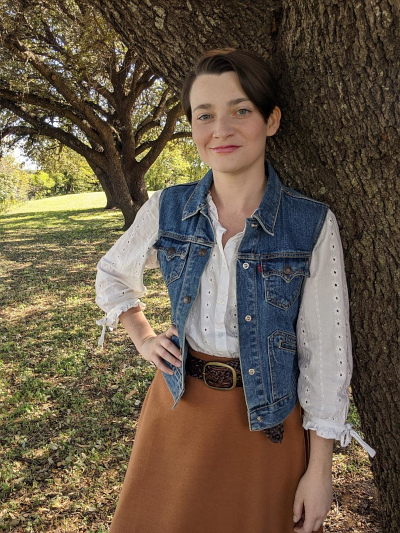
Founded in 1823 by Stephen F. Austin, the Texas Rangers have had a role in every part of Texas history. From the early frontier years, to the lawless oil boomtowns and motorized bandits of the 1920s, to the cutting-edge technology and techniques of the modern investigators, the Rangers have many stories to tell.
Audrey Ladd, Education Programs Manager of the Texas Ranger Hall of Fame and Museum, will be presenting on the transition of the Texas Rangers from frontier fighters into the well-respected law enforcement officers they are today. The presentation will be a combination of the cases, legends, and evolving technology that shaped the Rangers over two centuries.
Meet Audrey Ladd
Audrey Ladd has been the Education Programs Manager at the Texas Ranger Hall of Fame and Museum since August 2018. She has a B.A. in History from the University of North Texas and a M.A. in Museum Studies from Indiana University — Purdue University Indianapolis. Before coming to the Texas Ranger Museum, Audrey worked at institutions such as the San Jacinto Museum of History, La Porte, TX; the Indianapolis Zoo, Indianapolis, IN; and the Eiteljorg Museum of American Indians and Western Art, Indianapolis, IN.
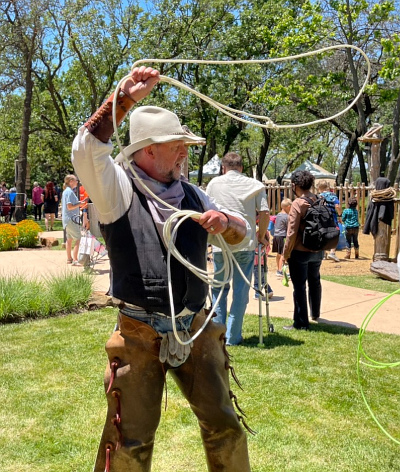
In 1936, Texas celebrated its centennial. After intense competition between the major cities in Texas at that time, primarily San Antonio, Houston, and Dallas, the north Texas city won the right to host the Texas Centennial Central Exposition. Dallas had been hosting the State Fair of Texas since at least 1885, and presented the most elaborate and extensive array of new construction and opportunities to present to the world what Texas was all about.
Included in these ambitious plans was a new Dallas Museum of Fine Arts. Among the exhibitions to be presented at the centennial celebration would be an historical survey of American art. Borrowing from institutions and private collectors across the nation, this exhibition would be touted as one of the finest of its kind ever presented in the United States up to that point. Moreover, part of the art exhibitions would be an opportunity to show the world what art-making in Texas looked like in 1936.
Unfortunately, perhaps the most important figure in Texas art was conspicuously not invited to the party, neither in the survey of American art nor in the Texas section. This artist had one of the most distinguished exhibition records of any Texas artist before or since 1936, including the National Academy of Design, the Pennsylvania Academy of the Fine Arts, the Art Institute of Chicago, and other public institutions, as well as two world's fairs. Moreover, despite having moved to Dallas in 1890; despite having brought the finest in American art to the State Fair of Texas for at least a decade so as to give the Fair art exhibition a strong foundation; despite having devoted his career to bringing art in all forms to Dallas, including exhibiting his own work, offering musical and theatrical performances, and establishing the very first public art gallery in Dallas; and despite having taught thousands of children in Dallas through art to be better observers of the world around them; the artist left off that invitation list was none other than Frank Reaugh.
Ironically, that same year Reaugh wrote a small pamphlet entitled simply, Biographical, in which he described how his art took a different trail from his contemporaries Charles M. Russell and Frederic Remington. Reaugh felt that during the Texas trail driving years he "was the only artist, it seems, who thought of [trail drives and Texas longhorns] as being a subject to paint." Calling longhorns, "Texas cattle," Reaugh probably painted—and photographed--the only images of true Texas longhorns, before they were cross-bred with European cattle. Furthermore, Reaugh's plein-air pastels of the landscape of the Southwest, usually done along the Red, Wichita, Brazos, and Concho rivers and on into New Mexico, Arizona, and Colorado, and even Wyoming, show his interest in preserving the landscape of the American Southwest before it was overgrazed or plowed under:
"I like to be where the skies are unstained by dust and smoke, where the trees are untrimmed and where the wild flowers grow. I like the brilliant sunlight, and the far distance. I like the opalescent color of the plains. It is the beauty of the great Southwest as God has made it that I love to paint."
Inventor, teacher, artist, and arts promoter all describe the man who is truly Texas's "Leonardo." Moreover his paintings are unparalleled in American art. Appropriately, he is often called the "Dean of Texas Artists." Moreover, Reaugh may have had greater impact on the future of Texas art than any artist or teacher prior to World War II, and possibly even today. Frank Reaugh was a genius.
Most publications on Reaugh up to this point have focused more on his eccentricities ("ate corn meal mush for breakfast"; "slept on sawhorses") or on the sketching trips with students as some kind of bohemian precursor to the "Merry Pranksters" of 1960s infamy. Moreover, some authors on Reaugh had their own axes to grind attempting to have had him rub shoulders with Old Texas or Old West characters. Furthermore, much of that which has been written about Reaugh has been so much folderol about the authors themselves; rarely has Reaugh been allowed to speak for himself. Finally, there are those raconteurs about Reaugh who suffer mightily for him, or have attempted to absorb some of his spotlight as their own. Sadly, no publication on Reaugh that I am aware of has ever looked critically at his life and career, nor seriously for that matter. Unfortunately, Reaugh has become somewhat legendary, and in most cases, the legend was printed. However, while the facts support much of the legend, the facts are a far greater story. My monograph is an attempt to let Mr. Reaugh, and the truth about him, speak for itself.
Meet Michael R. Grauer
Michael Grauer is the McCasland Chair of Cowboy Culture/Curator of Cowboy Collections and Western Art at the National Cowboy & Western Heritage Museum in Oklahoma City, Oklahoma.
Mr. Grauer holds a Bachelor of Fine Arts in painting and a Bachelor of Fine Arts in art history from the University of Kansas; the Master of Arts in art history from Southern Methodist University; and the Master of Arts in history from West Texas A&M University. He began his career at the Smithsonian American Art Museum and was curator of art and Western heritage at Panhandle-Plains Historical Museum for 31 years, and has been a museum curator for 35 years. He has curated over 150 exhibitions on Western art, culture, and history, authored over 70 publications, and appeared in ten documentaries in the US and in Germany. He taught art history and Western American Studies at West Texas A&M University from 1999 to 2017. CASETA gave him a Distinguished Service Award in 2009. He wrote the Dictionary of Texas Artists, 1800-1945 in 1999 and continues to revise it. He was the University of Kansas Kress Foundation Department of Art History's distinguished alumnus for 2012. He received CASETA's exhibition and publication award for his exhibition and catalogue, Branding with Brushstroke and Color: Texas Impressionism, 1885-1935. His 2016 book, Rounded Up In Glory: Frank Reaugh, Texas Renaissance Man, is considered the biography on Reaugh. In September 2021, his book, Making a Hand: The Art of H. D. Bugbee, received the Western Heritage Wrangler Award for Best Western Art Book for 2020. He was inducted into the Kansas Cowboy Hall of Fame at Dodge City, Kansas, as Cowboy Historian for 2021.

Texas Ranger Capt. William L. Wright of Company A was sent in 1927 to keep the peace in Wink, Texas, an oil boom town near the New Mexico border. There he learned about Jal, where "Two-Gun Dick" Herwig had taken charge after being chased out of Texas. Wright led a raid on Herwig's empire that included federal, state, and county lawmen, successfully using the tactic of having the latter "deputized" by a federal judge to operate across the line. The incident, just one of many connected with Prohibition and keeping the peace in Texas oil towns, is particularly interesting because of the interagency cooperation involved, and the ultimately peaceful outcome.
Meet Richard B. McCaslin, PhD
Richard B. McCaslin, TSHA Professor of Texas History at the University of North Texas, is the author or editor of nineteen books. These include Tainted Breeze: The Great Hanging at Gainesville, Texas, October 1862, which earned a Tullis Prize and AASLH commendation; Lee in the Shadow of Washington, which won a Laney Prize and Slatten Award and was nominated for a Pulitzer; Fighting Stock: John S. "Rip" Ford of Texas, which got a Pate Award and Bates Award; At the Heart of Texas: One Hundred Years of the Texas State Historical Association, 1897-1997, which won an Award of Merit from the Texas Philosophical Society; and Saratoga on the Cibolo: Sutherland Springs, Texas, which received a Publication Award from the San Antonio Conservation Society. His Tennessee volume for the Portraits of Conflict series earned the Douglas Southall Freeman Award, and the series received an AASLH commendation. A Fellow of the Texas State Historical Association and Admiral in the Texas Navy, he also has commendations from the Civil War Round Tables in Dallas, Fort Worth, and Shreveport for his academic work on the Civil War era.
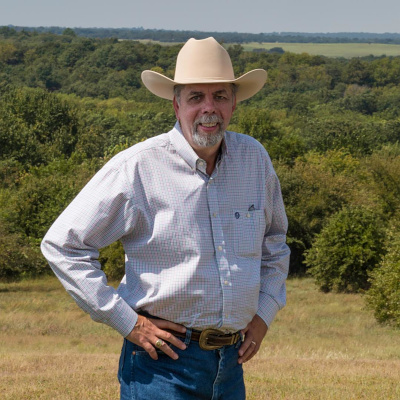
The public perception of the American West has been heavily influenced by dime novels, books, movies, and television. Until fairly recently, the Hollywood version of the cowboy portrayed a hardy, self-reliant knight of the plains. With few exceptions, the Hollywood cowboys were typically Anglo males. Women and minorities were relegated to secondary roles or simply whitewashed out of the story. The stories of these "Neglected Cowboys" are integral to the history of the American West.
Meet Wayne Ludwig
Wayne Ludwig is a Fort Worth native, cattle trails historian, and author of The Old Chisholm Trail: From Cow Path to Tourist Stop (Texas A&M University Press, 2018). He created the Texas Cattle Trails History Group on Facebook and is a member of Western Writers of America, Academy of Western Artists, and Old Trail Drivers Association of Texas. The Old Chisholm Trail was awarded the Elmer Kelton Book of the Year award by the Academy of Western Artists. The book was also named a Finalist for 2018 Most Significant Scholarly Book by the Texas Institute of Letters. Wayne has been a guest speaker at various symposiums and historical association events and instructor for TCU Silver Frogs extended education.
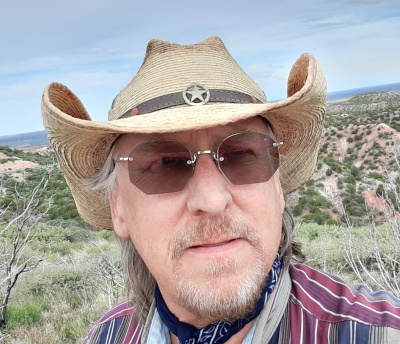
Tom Ashmore and C.A. Maedgen conducted a new archeological study in 2022 to determine the layout of the cavalry sub-post of Fort Clark, Camp Meyers Spring. With over 1,000 hours of research and field work, and using new technology of satellite and drone imagery, as well as terrain reconnaissance and artifact mapping, they were able to determine the layout of the entire encampment, including the Seminole Negro Indian Scout Camp, right down the individual tents. They will present a presentation of their work, showing all of the entire 30 acre camp.
Meet Tom Ashmore
Tom Ashmore spent 21 years in the Air Force as a special intelligence analyst. After retiring as an analyst, he worked as a contractor teaching intelligence skills for the Air Force Intelligence School for 20 years at Goodfellow AFB, Texas. As a member and vice president of the Concho Valley Archeological Society, he headed up archeological investigations of Butterfield's Overland Mail's Johnson's Station in Irion County, Grape Creek Station in Coke County and Horsehead Crossing Station in Crane County. He also headed up investigations of Paint Rock 1800s Historic Camp Sites in Concho County; Tower Hill Military Lookout in Sterling County; and ancient rock shelters in the Lower Pecos region of Texas, working with both Conch Valley and the Iraan Archeological Societies. He completed a book in 2019 on his Butterfield Trail investigations, The Butterfield Trail Through the Concho Valley and West Texas. He is currently a member of the Iraan Archeological Society and the Southwest Federation of Archeological Societies (SWFAS). He has written several articles for Desert Tracks publications and SWFAS transactions over the years.
Meet C. A. Maedgen
C. A. Maedgen, a geologist, is also an amateur archeologist and photographer. He began taking photographs while stationed in Vietnam when he served there in the Air Force, and now focuses primarily on birds and wildlife.